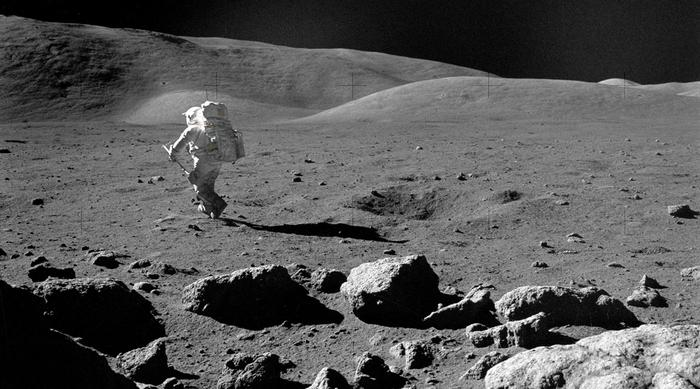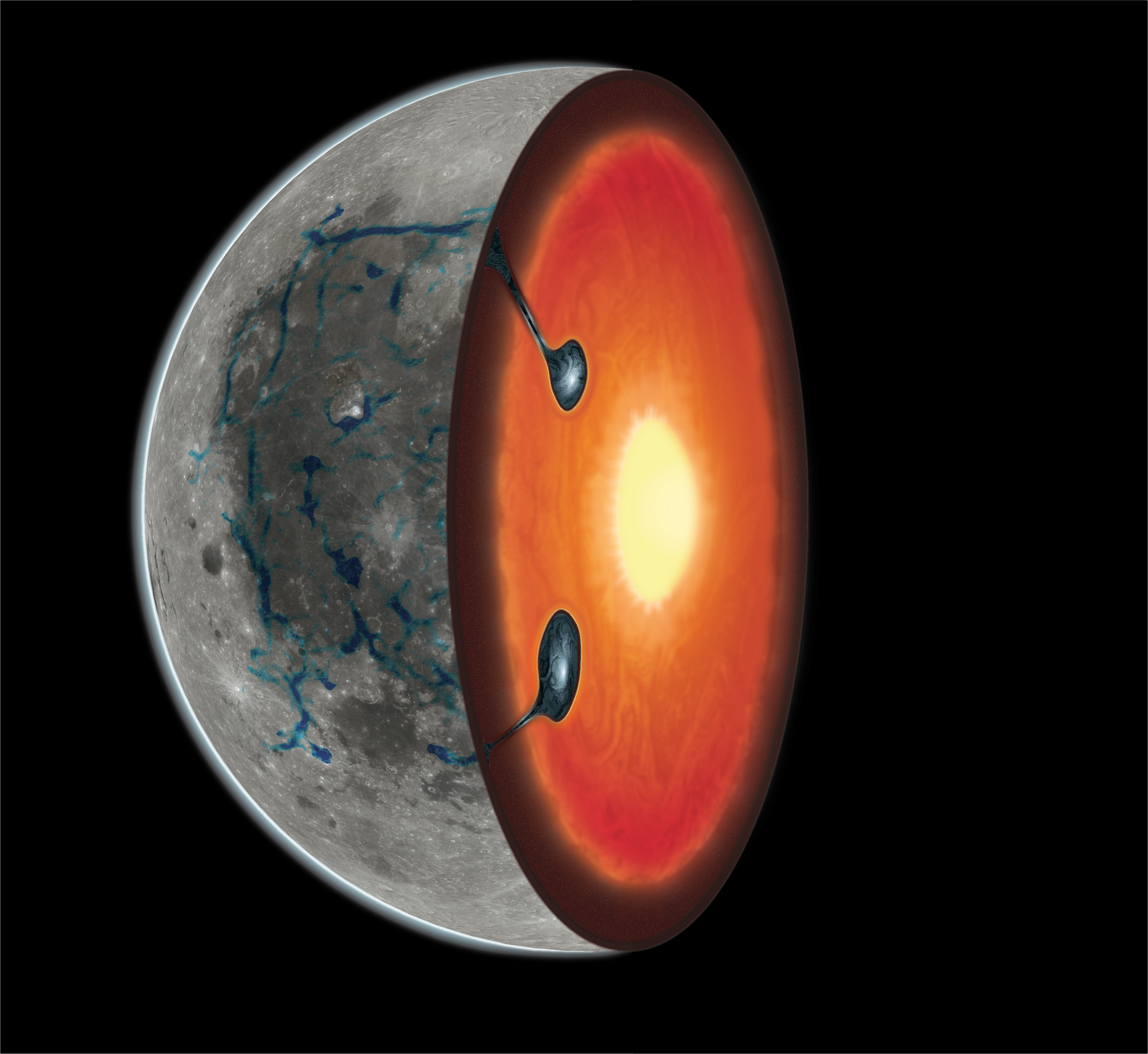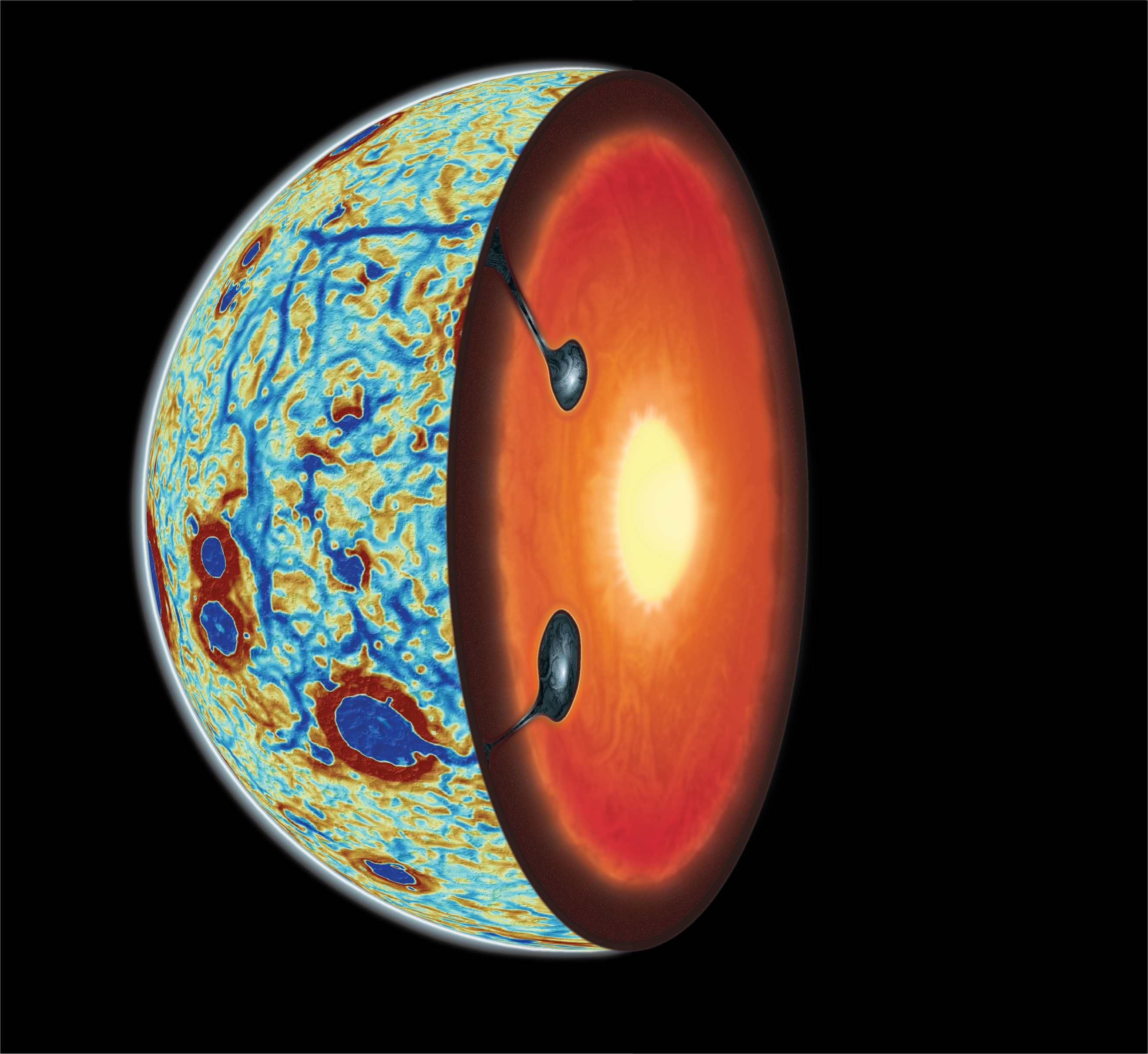New evidence has confirmed theories of how the lunar mantle formed, and given increased precision to the timing of this important event for our astronomical companion. In the process, some important insight has emerged into the question of why the near and far sides have such different chemistry, and only one has seas.
Like the Earth, the Moon is considered to have a core, mantle, and crust, but the lunar mantle solidified long ago. The Moon’s geology is simpler than the Earth’s, but so much harder to study that crucial questions remain about the process by which lunar rocks formed. However, the big picture is finally coming into focus.
The standard theory of the lunar crust’s formation proposes that ilmenite (FeTiO3)-rich rocks formed out of the magma ocean that covered the Moon when it first coalesced from material thrown up in the impact that made it. The ilmenite component of the early crust was heavier than the liquid mantle below, an unstable situation that could not last. Consequently, the ilmenite-bearing rocks sank in what is known as global mantle overturn.
“Our moon literally turned itself inside out,” said co-author Dr Jeff Andrews-Hanna of the University of Arizona in a statement. “But there has been little physical evidence to shed light on the exact sequence of events during this critical phase of lunar history, and there is a lot of disagreement in the details of what went down – literally.”
Some scientists have argued for a single swift event, others for sinking a piece at a time.
Some of this ilmenite eventually returned to the surface in volcanic eruptions. By then the crust was thick enough to support this material, so it remained on the surface for Apollo astronauts to find in what are known as ilmenite-bearing cumulates (IBCs).
However, one problem with this story has been noted in the fact that models of this process predict what the authors of a new study call “a globally symmetric layer” of IBCs. Yet what we see is quite different, with IBCs concentrated in what is known as the PKT region, where potassium and rare earths are abundant.
This means the IBCs are concentrated on the side of the Moon that faces the Earth, but the question of how they got there has also been much debated. Solving it might explain the larger question of why the two sides are so different.

Apollo astronauts brought basaltic lava rocks back from the moon with surprisingly high concentrations of titanium, later found to be a feature of the near side of the Moon only, which has only now been explained.
Image Credit: NASA
Gravity anomalies around the PKT region are thought to represent vestiges of the final stage of the lunar mantle overturn. By making sense of their distribution, it should be possible to work out what happened, and why the IBCs are not evenly distributed. The authors noticed a match between these previously matched anomalies and patterns produced in a previously published model of mantle overturning.
Once the early eras in lunar evolution passed, the dominant geologic process came to be asteroid impacts, so the obvious explanation for the observed asymmetry is a massive impact. The model attributed the overturning to the event that caused the giant basin created on the far side of the Moon near the south pole, known as the South Pole-Aitken (SPA) impact.
“Our analyses show that the models and data are telling one remarkably consistent story,” said co-lead author PhD student Weigang Liang. “Ilmenite materials migrated to the near side and sunk into the interior in sheetlike cascades, leaving behind a vestige that causes anomalies in the moon’s gravity field.”

Two ilmenite-bearing cumulate downwellings from lunar mantle overturn. The gravitational signature and location of the downwellings are shown as blue.
Image Credit: Adrien Broquet (LPL) & Audrey Lasbordes

Gravity gradient map of the lunar nearside and cross-section showing two downwellings taking ilmenite downwelling.
Image Credit: Adrien Broquet (LPL) & Audrey Lasbordes
The distribution of IBC remnants and the estimated ages of the Moon’s largest basins lead the authors to conclude the overturn happened at least 4.09 billion years ago, and probably at least 130 million years before that. Models suggest the process took 100-300 million years. The SPA is thought to have taken place 4.25 million years ago, but based on this the authors suggest it might have been a little earlier.
“The PKT border anomalies provide the most direct physical evidence for the nature of the post-magma ocean cumulate mantle overturn and sinking of ilmenite into the deep interior,” the authors write.
“It turns out that the moon’s earliest history is written below the surface, and it just took the right combination of models and data to unveil that story,” Andrews-Hann said.
The paper is published in the journal Nature Geoscience.
Source Link: Turning Itself Inside Out Made The Moon Lopsided